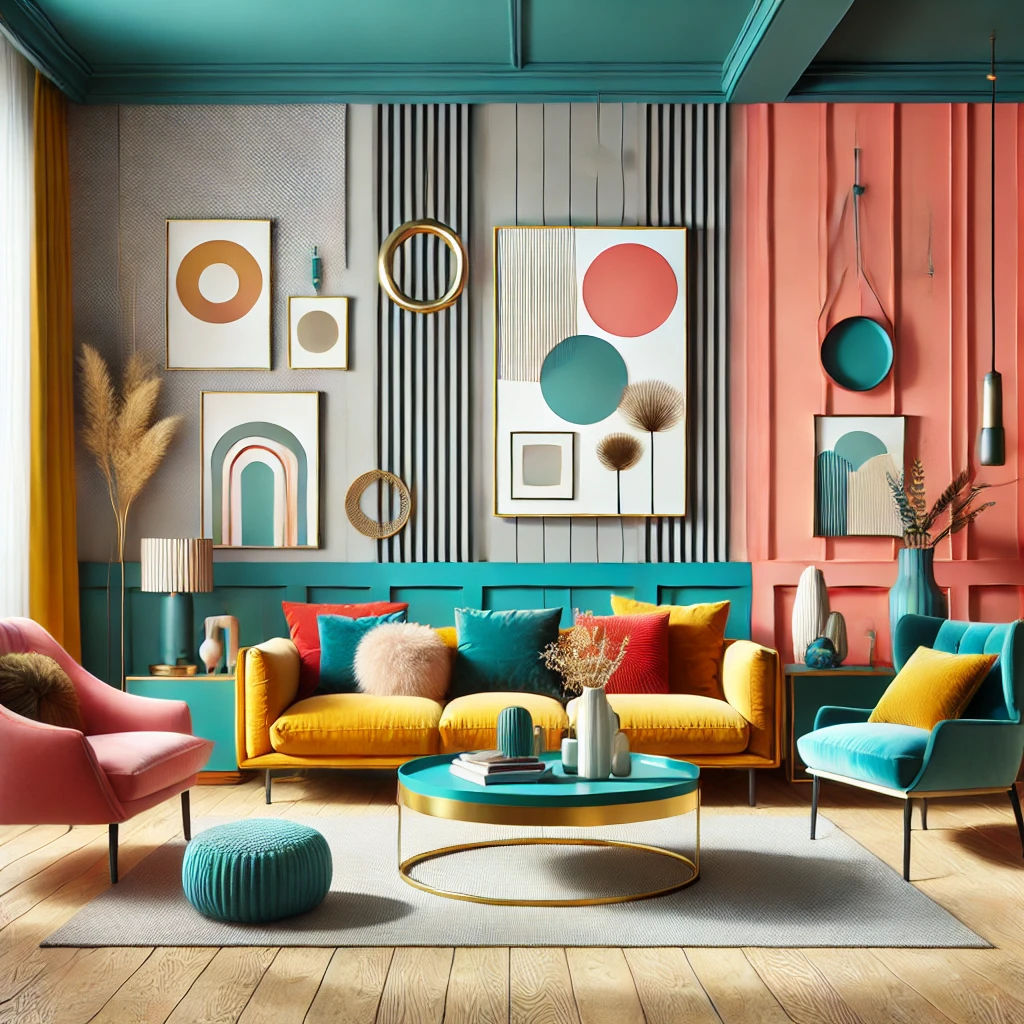
Enliven Your Home's Spirit
1. Psychological Effects of Colors
Colors directly affect people’s moods and emotions. Therefore, it’s important to be careful when choosing colors in interior design. Here are the psychological effects of some basic colors:
Blue: Has a calming and relaxing effect. It is often used in bedrooms and bathrooms, which are spaces for rest. Blue is also suitable for study rooms as it enhances focus.
Green: Evoking nature, green provides balance and tranquility. It is ideal for creating a calming atmosphere in living rooms and bedrooms.
Red: A symbol of energy and passion, red is attention-grabbing and lively. It can create an appetite-stimulating effect in dining rooms but may be too stimulating for bedrooms.
Yellow: Cheerful and positive, yellow adds energy to spaces. It’s great for kitchens and dining areas but can be overwhelming if overused.
Gray: A neutral and sophisticated color often used in modern interiors. Gray blends easily with other colors and adds an elegant touch to spaces.
White: Creates a sense of purity and spaciousness, making rooms look larger and brighter. White is indispensable for minimalist and modern designs.
2. Consider the Size and Lighting Conditions of the Space
Colors have a significant impact on the perceived size and lighting conditions of a space. For small rooms, opting for light colors can make the space appear larger and more open. Light colors like white, cream, and pastels reflect light, helping the room feel more expansive.
In larger rooms, using dark colors can make the space feel cozier and warmer. However, dark colors absorb light, so they need to be complemented with good lighting.
3. Create Color Schemes
Creating color schemes in interiors is key to achieving a harmonious look. There are three main approaches to creating color schemes:
Monochromatic: By using different shades of a single color, you can achieve a simple and cohesive look. This approach is ideal for minimalist decorations.
Analogous: A scheme created by using colors that sit next to each other on the color wheel. For example, using shades of blue, green, and turquoise together can create a soft and soothing atmosphere.
Complementary: A scheme created by using colors that are opposite each other on the color wheel. This approach adds energy and dynamism to the space. For example, using contrasting colors like blue and orange can create a striking effect.
4. Use Accent Colors
Accent colors are a great way to highlight specific areas in a room. By using a bold and vibrant accent color alongside a neutral base color palette, you can add energy and character to the space. These accent colors can be used in pillows, rugs, artwork, or a single wall in the room.
5. Create Depth with Different Materials
Colors can be introduced into a space not just through paint but also through different materials. Wood, stone, metal, and fabric are great ways to add depth through color. For example, white walls combined with natural wood tones add warmth and a sense of nature to the space. By using different textures and materials, you can achieve both visual and tactile richness in the space.
6. Maintain Color Balance
The distribution of colors in a space is important for creating a balanced look. While too many bright colors can be overwhelming, an excess of neutral tones can make the space look dull. To maintain balance, ensure the colors in the room harmonize with each other. A balanced use of colors makes the space appear more cohesive and aesthetically pleasing.
